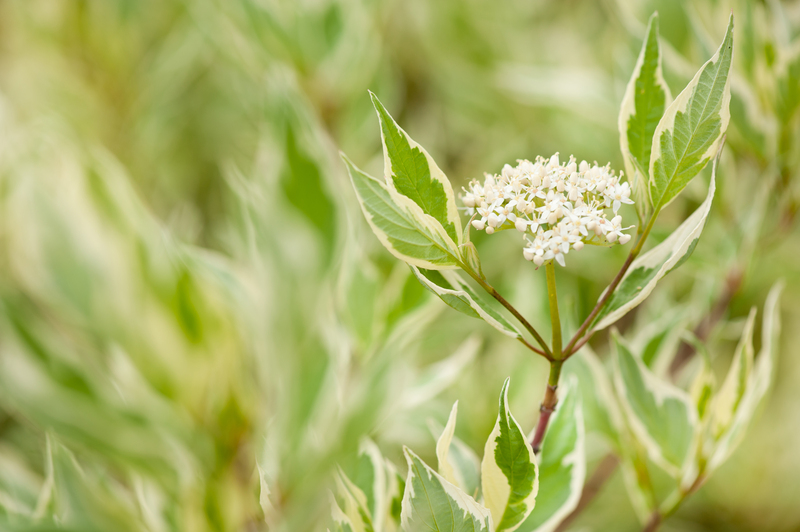Steps to Begin Unraveling Your Neglected Garden's Potential
Posted on 28/05/2025
Steps to Begin Unraveling Your Neglected Garden's Potential
Every garden, no matter how long it has been left to the wild, holds a hidden promise. Discovering and unlocking the potential of a neglected garden can breathe new life not just into your outdoor space, but into your home and your soul. If you're ready to roll up your sleeves, this comprehensive guide will walk you step-by-step through reviving your neglected garden and turning it into a flourishing sanctuary.
Why Unravel Your Garden's Potential?
A neglected garden might seem daunting, but underneath the overgrowth awaits endless possibilities. Transforming a forgotten outdoor space can:
- Add value to your property
- Improve mental well-being
- Create a haven for wildlife
- Serve as a source of home-grown produce
- Offer a beautiful environment for entertainment and relaxation
Pursuing the potential of your neglected garden is not just about aesthetics--it's an investment in your lifestyle and well-being.

Step 1: Assess Your Overgrown Space
Begin by carefully walking through your garden. Take a notebook or your phone and jot down initial observations. Ask yourself:
- What existing structures or features do you have (paths, patios, sheds, ponds)?
- Which plants are still alive, and which have taken over?
- Are there any signs of pests or disease?
- How is sunlight distributed across the garden during different times of day?
- What is the current state of the soil?
Don't be discouraged by what you see. This step is purely about understanding your starting point and imagining what your neglected garden's full potential could be.
Tip:
Take photographs from different angles and at various times of day to help plan and track progress.
Step 2: Clear Out Unwanted Growth and Debris
The next phase in unlocking your garden's possibilities is clearance. Here's how to do it effectively:
- Wear protective clothing: Long sleeves, thick gloves, and strong footwear are essential.
- Remove large debris: Start by hauling out any trash, old tools, pots, or broken furniture.
- Tame overgrown plants: Cut back brambles, weeds, and shrubs. Work in small sections to avoid overwhelm.
- Save mature trees and healthy shrubs: These can be pruned and incorporated into your new landscape.
- Compost organic matter: Where possible, compost leaves and plant trimmings for future soil improvement.
This step can be intensive, but it forms the foundation for all future garden transformations. Take it slow and steady--you're not racing, you're rediscovering potential!
Step 3: Analyze the Soil
Healthy soil is the secret to a thriving garden. After clearing, dig a small hole to inspect the underlayer. There are three main things to consider:
- Soil structure (sand, clay, loam)
- Drainage ability
- Soil pH
Quick tests using DIY kits from garden centers give instant results. Amend your soil by mixing in organic matter, such as compost, to boost fertility and structure. Addressing soil should always be a priority when returning life to a neglected garden.
Step 4: Make a Plan to Unveil Your Garden's Hidden Potential
With new clarity comes vision. Sketch a rough map of your garden, labeling:
- Areas of full sun, partial sun, and shade
- Existing features to keep or enhance
- Spaces for new beds, lawns, or relaxation zones
- Paths, seating areas, and focal points
Think about your goals. Do you want a place for entertaining, a sanctuary for wildlife, a productive vegetable patch, or a combination?
Use your plan as a flexible guide. Sometimes, the journey of revealing your garden's potential will inspire new ideas along the way.
Get Inspiration
Look online, read gardening books, or visit local gardens for design ideas. Pinterest and Instagram offer endless examples of garden before-and-after transformations and creative layouts.
Step 5: Prune and Revive Existing Plants
Neglected plants often surprise us--they can be revived with a little care. To maximize the potential hiding in your overgrown garden:
- Prune dead or diseased branches from trees and shrubs
- Divide overcrowded perennials to boost their vigor
- Shape hedges and remove any weak or spindly growth
- Support leggy plants with stakes or trims
This loving attention often results in a surge of health and blooms, giving you an instant win as you continue your garden's revival.
Step 6: Control Persistent Weeds and Problem Areas
Weed management is an ongoing process. Once you've completed the big clear-out:
- Apply a thick mulch of bark, straw, or compost to borders and beds
- Use weed-suppressing fabric under paths or decking
- Regularly hand-weed or use a hoe to remove any regrowth
Staying consistent at this stage ensures your garden doesn't slip back into neglect and your hard work pays off.
Step 7: Refresh Lawns and Ground Cover
Lawns can either be a centerpiece or a simple backdrop. To revive a neglected lawn:
- Mow long grass gradually--never cut more than a third at a time
- Rake and scarify to remove moss and thatch
- Reseed bare patches or lay new turf if needed
- Add wildflower seeds for a low-maintenance, pollinator-friendly meadow effect
If you dislike lawn maintenance, consider alternatives like gravel, groundcover plants, or paving in key areas. This step is crucial for maximizing your neglected garden's potential through improved usability and beauty.
Step 8: Choose New Plants for Year-Round Impact
Now comes the fun part--selecting new plants! When choosing plants for your revitalized garden:
- Match plant choices to your soil and sunlight conditions
- Favor native or drought-tolerant varieties for easier care
- Include a mix of evergreen, deciduous, and perennial plants for seasonal interest
- Consider scent and color schemes to create ambiance
- Plant bulbs in autumn or spring for effortless pops of color
Think about layers--place taller plants at the back, mid-sized in the center, and ground covers or trailing plants at the edges, to add depth and lushness to your newly rescued garden space.
Wildlife-Friendly Choices
Including pollinator-friendly flowers, berry bushes, or a small pond will attract birds, bees, and butterflies, helping your garden come alive in every sense.
Step 9: Restore and Add Hardscaping Elements
Patios, paths, sheds, fences, and raised beds all shape your garden's structure:
- Repair or clean any paths, patios, or decking
- Paint or restore fences and sheds for instant freshness
- Lay new paving or edging where needed to define beds and walkways
- Add garden furniture for relaxing or entertaining guests
Responsibly reusing materials from your own garden, such as old bricks or stones, is sustainable and adds unique character. When done thoughtfully, hardscaping anchors your garden's new identity and maximizes its usability.
Step 10: Encourage a Routine and Long-Term Vision
Reviving a neglected garden is a journey, not a one-time fix. To sustain the transformation:
- Develop a simple maintenance schedule (weeding, pruning, mulching, watering)
- Keep composting to feed your garden naturally
- Continue learning--gardens evolve and so will your skills
- Seasonally update your planting and design for ongoing interest
Unraveling your garden's potential is an ongoing process that offers immense rewards through every season's changes.
Bonus: Simple DIY Projects to Add Instant Impact
- Install solar lights or fairy lights to create ambiance after sunset
- Add colorful pots or repurpose old containers
- Hang bird feeders or bat boxes to encourage wildlife
- Paint an old bench or build a new one from reclaimed wood
- Create a vertical garden or living wall for small spaces
Small details can make your unraveled garden feel truly personal and welcoming, and most projects can be done in a weekend.

Common Challenges When Transforming Neglected Gardens
As you embark on revitalizing your outdoor space, you might encounter:
- Stubborn perennial weeds: Persistence pays off, or try covering with cardboard and a thick mulch to starve out roots.
- Compacted soil: Aerate and add organic matter regularly over time.
- Poor drainage: Install French drains, build raised beds, or choose moisture-loving plants.
- Limited time or budget: Focus first on the most visible or rewarding areas, and expand as resources allow.
The key is patience and perseverance. Every step, no matter how small, brings you closer to realizing your garden's hidden wonders.
Conclusion: Rediscover the Magic of Your Outdoor Space
Transforming a long-neglected garden into a vibrant, welcoming oasis is incredibly rewarding. By following these steps to unravel your neglected garden's potential--from assessment and clearance to planting and ongoing care--you'll create an outdoor space full of life, beauty, and joy for years to come.
Remember: Every patch of ground can become a haven of possibility. With patience, planning, and creativity, you will reveal the unique potential sleeping in your own backyard.
Start today--and watch your garden, and your connection to it, blossom!
FAQs:
- How quickly can I revive a neglected garden?
Small changes can be immediate, but full transformation is a gradual process over seasons. - Is it expensive to reclaim my garden?
Focus on clearing, planning, and incremental upgrades to manage costs. Many improvements are DIY- and budget-friendly. - What if I have no gardening experience?
Start small and learn as you go--gardening resources abound online and in local communities.
Ready to unlock your neglected garden's potential? Share your plans and progress with us in the comments below, or explore more expert tips in our garden design resource hub.



